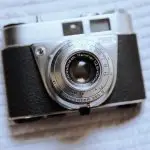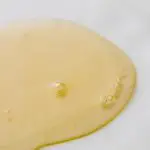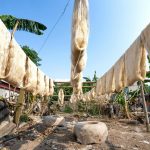Wondering whether fabric glue dries clear? You're not alone. Understanding if fabric glue dries transparently is crucial for your crafting projects. This concise guide will provide you with the knowledge and tips you need to achieve clear and professional results.
From the transparency of different fabric glues to the factors that affect drying clarity, we'll cover it all. By the end, you'll be equipped with the expertise to select the best fabric glue for your needs and ensure it dries perfectly clear every time.
Let's dive in and demystify the process of achieving clear, professional-looking results with fabric glue.
Key Takeaways
- Fabric glue is specifically formulated to dry transparently.
- The type of fabric used can affect the drying clarity of fabric glue.
- Synthetic fabrics and fabrics with rough textures or loose weaves may impact the clarity.
- Applying a thin and even layer of fabric glue and working in a well-ventilated area can help achieve clear drying results.
What Is Fabric Glue
Fabric glue is a type of adhesive designed specifically for use with fabrics. It's a versatile product with a wide range of uses, including hemming, patching, and embellishing garments without the need for sewing. This makes it an essential tool for crafters, DIY enthusiasts, and even professional designers. Fabric glue is also commonly used for creating or repairing home decor items such as curtains, throw pillows, and upholstery.
One of the key advantages of fabric glue is its quick drying time. Unlike traditional sewing methods that require time for stitching and setting, fabric glue can bond fabric surfaces together rapidly, saving time and effort. This quick-drying feature also makes it ideal for quick fixes and last-minute alterations.
In addition to its bonding capabilities, fabric glue is also known for its clear drying properties. When applied correctly, fabric glue dries to become transparent, ensuring that the bond remains inconspicuous and doesn't affect the overall appearance of the fabric. This makes it suitable for a wide range of fabric types and colors, providing a seamless and professional-looking finish.
Transparency of Fabric Glue
Wondering about the transparency of fabric glue after it dries?
You'll be pleased to know that clear-drying fabric glue typically remains transparent once it has dried.
This means that your fabric projects will maintain their original appearance without any visible residue from the glue.
Clear Drying Fabric Glue
When using fabric glue, you can rely on it to dry clear, allowing for a seamless bond between fabrics. Clear application is crucial for achieving professional-looking results. Fabric glues are specifically formulated to dry transparent, ensuring that no residue or discoloration is left behind. This transparency is essential for maintaining the aesthetic appeal of the fabric.
Additionally, the drying time of fabric glue is relatively fast, further contributing to its clear drying nature. This quick drying time allows you to move forward with your project without having to wait an extended period for the glue to set. As a result, you can efficiently complete your fabric projects with confidence, knowing that the fabric glue will dry clear and secure your fabrics with a professional finish.
Transparency After Drying
You'll notice that fabric glue dries transparent, maintaining the natural appearance of the materials.
The transparency effects of fabric glue are a result of its composition and the drying time impact. When the glue is applied and left to dry, it becomes clear, allowing the fabric's original color and texture to remain visible.
This transparency is essential for maintaining the aesthetic integrity of the materials being bonded. It ensures that the bond lines aren't visible and that the overall appearance of the fabric isn't compromised.
Additionally, the drying time can impact the level of transparency achieved, with longer drying times often resulting in a clearer finish. Understanding the transparency of fabric glue after drying is crucial for achieving the desired visual results in your fabric projects.
Factors Affecting Drying Clarity
When it comes to the clarity of fabric glue drying, there are a few key factors to consider.
The type of fabric being used can have a significant impact on how clear the glue dries.
Additionally, the thickness of the glue application also plays a role in determining the final clarity of the dried fabric glue.
Fabric Type Impact
The type of fabric you choose will significantly impact how clearly fabric glue dries. Different fabrics have varying compositions and textures that can affect the drying clarity of fabric glue. Factors such as fabric composition and the impact of temperature play a crucial role in determining the final drying clarity. Consider the following when choosing fabric for your project:
- Fabric Composition: Synthetic fabrics like polyester may not absorb glue as well as natural fabrics such as cotton or silk, affecting drying clarity.
- Texture: Fabrics with rough textures or loose weaves may result in glue spreading unevenly, affecting the clarity of the dried glue.
- Impact of Temperature: Higher temperatures can cause certain fabrics to react differently to fabric glue, potentially impacting drying clarity.
- Dye Content: Fabrics with high dye content may affect the color and clarity of the dried glue.
Choose your fabric carefully to ensure optimal drying clarity for your fabric glue projects.
Application Thickness Matters
One important factor affecting the drying clarity of fabric glue is how thickly it's applied. The thickness impact is crucial in determining the drying time and clarity of the glue.
When fabric glue is applied thinly, it dries faster and clearer. Thin applications allow the glue to spread evenly and penetrate the fabric fibers, resulting in a transparent and neat finish.
Conversely, if the glue is applied too thickly, it takes longer to dry and may not dry completely clear. Thick applications can also lead to visible clumping or uneven drying, affecting the overall clarity.
Therefore, to ensure that fabric glue dries clear, it's essential to apply it thinly and evenly, allowing for a quicker drying time and a transparent finish.
Tips for Achieving Clear Drying
To ensure that fabric glue dries clear, it's important to apply a thin and even layer to the surface. Here are some tips for achieving clear drying:
- Use the right amount: Applying too much fabric glue can result in a cloudy or uneven drying. Use a minimal amount to cover the surface evenly.
- Avoid excessive handling: Once the glue is applied, refrain from touching or moving the fabric until it has completely dried. This can prevent smudging or clouding of the glue.
- Select the appropriate brand: Not all fabric glues dry clear, so it's important to choose a brand known for its clear-drying formula. Research and compare different brands to find the one that best suits your needs.
- Work in a well-ventilated area: Proper ventilation can help the glue dry evenly and prevent any fumes from affecting the clarity of the drying process.
Following these techniques and best practices will help you achieve clear results when using fabric glue. By avoiding common misconceptions and comparing brands, you can ensure that your fabric glue dries clear every time.
Comparing Different Fabric Glues
When comparing different fabric glues, consider the transparency of their drying process. The drying clarity of fabric glue is essential, especially when working with light or delicate fabrics.
In addition to clarity, adhesive performance is a crucial factor to consider. Look for fabric glues that provide strong adhesion without leaving any visible residue.
Durability and flexibility are also key attributes to assess. A good fabric glue should be able to withstand regular wear and tear, as well as be flexible enough to move with the fabric without causing stiffness or cracking.
Some fabric glues may offer specific features such as waterproofing or machine washability, which can further enhance their durability. It's important to carefully read product labels and understand the intended use of each fabric glue to ensure it meets your specific needs.
Common Misconceptions About Drying Clarity
Many people assume that fabric glue always dries clear, but it's important to consider the specific characteristics of different fabric glues when evaluating their drying clarity.
While it's true that some fabric glues dry clear, there are common misconceptions about drying clarity that you should be aware of:
- Drying Time: Not all fabric glues dry clear within the same timeframe. Some may require longer drying times to achieve full clarity, so it's essential to follow the manufacturer's instructions for optimal results.
- Adhesive Strength: The misconception that all clear-drying fabric glues have the same adhesive strength can lead to disappointment. Different fabric glues have varying levels of adhesive strength, and clear-drying glues are no exception. It's important to select a fabric glue that not only dries clear but also provides the necessary strength for your project.
- Environmental Factors: Many people overlook the impact of environmental factors on drying clarity. Factors such as humidity and temperature can affect how clear the fabric glue dries, so it's crucial to consider the environment in which the glue is drying.
- Application Thickness: The misconception that applying more fabric glue will result in clearer drying can actually lead to the opposite effect. Excessive application can affect drying clarity and the overall quality of the bond.
Understanding these common misconceptions about drying clarity can help you make informed decisions when choosing fabric glue for your projects.
Best Practices for Clear Results
For achieving clear results when using fabric glue, it's crucial to consider the application technique. To ensure the best adhesive strength and clear drying results, start by preparing the fabric. Clean and dry surfaces will promote better adhesion.
Apply the fabric glue sparingly and evenly to avoid any excess seeping through the fabric, which could cause discoloration. Press the glued surfaces firmly together to create a strong bond.
Additionally, carefully follow the manufacturer's instructions regarding drying time. Allow ample time for the glue to dry completely before handling the fabric to prevent any smudging or cloudiness.
When working with fabric glue, it's important to select a high-quality product known for its clear drying properties and strong adhesive strength. Remember that different fabric glues may have varying drying times and application techniques, so always refer to the specific instructions for the best results.
Frequently Asked Questions
Can Fabric Glue Be Used on All Types of Fabric, or Are There Certain Materials It Does Not Work Well With?
Fabric glue can be used on most types of fabric, but there are limitations. It's best to test on a small, inconspicuous area first. Follow application techniques and care instructions for best results, and consider drying time and cleaning impact.
Is There a Specific Temperature or Humidity Level That Is Best for Achieving Clear Drying With Fabric Glue?
For achieving clear drying with fabric glue, the ideal humidity is around 50-70% and the best temperature is between 70-85°F. Maintaining these conditions will help ensure transparency and effective adhesion.
Are There Any Special Techniques or Tools That Can Help Ensure Fabric Glue Dries Completely Clear?
To ensure fabric glue dries completely clear, use special techniques like applying a thin layer, using a hairdryer on low heat, and choosing the right fabric types. This can help reduce drying time and improve transparency.
How Long Does It Typically Take for Fabric Glue to Dry Clear, and Are There Any Ways to Speed up the Drying Process?
Fabric glue typically dries clear within 24 hours, but drying time varies based on the brand and application thickness. To speed up the process, use a hair dryer on a low setting or apply heat with an iron.
Can Fabric Glue Be Washed or Dry Cleaned After It Has Dried Clear, or Will It Affect the Transparency of the Glue?
After fabric glue dries clear, it can generally be washed according to the product's washing instructions. However, dry cleaning may impact the transparency of the glue, so it's advisable to test a small, inconspicuous area first.
- Where to Buy Sherpa Suede Fabric - July 12, 2025
- How to Draw or Illustrate the Texture of Suede Fabric - July 12, 2025
- What Is Baseball Suede Leather Fabric? - July 12, 2025







